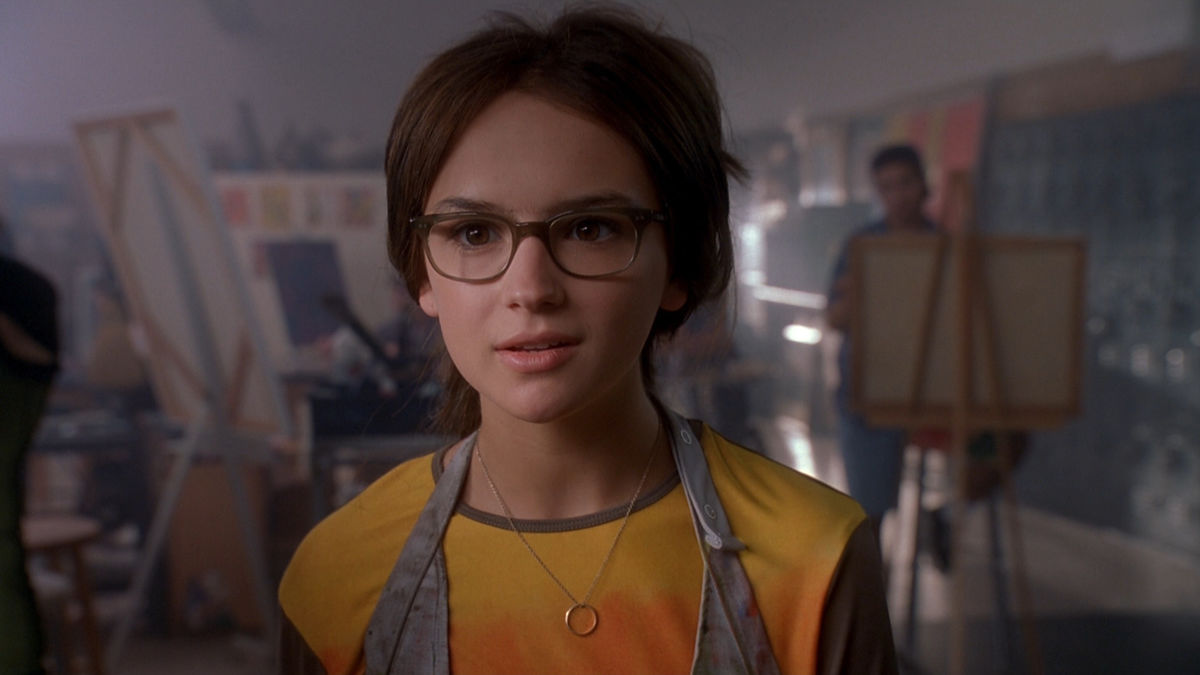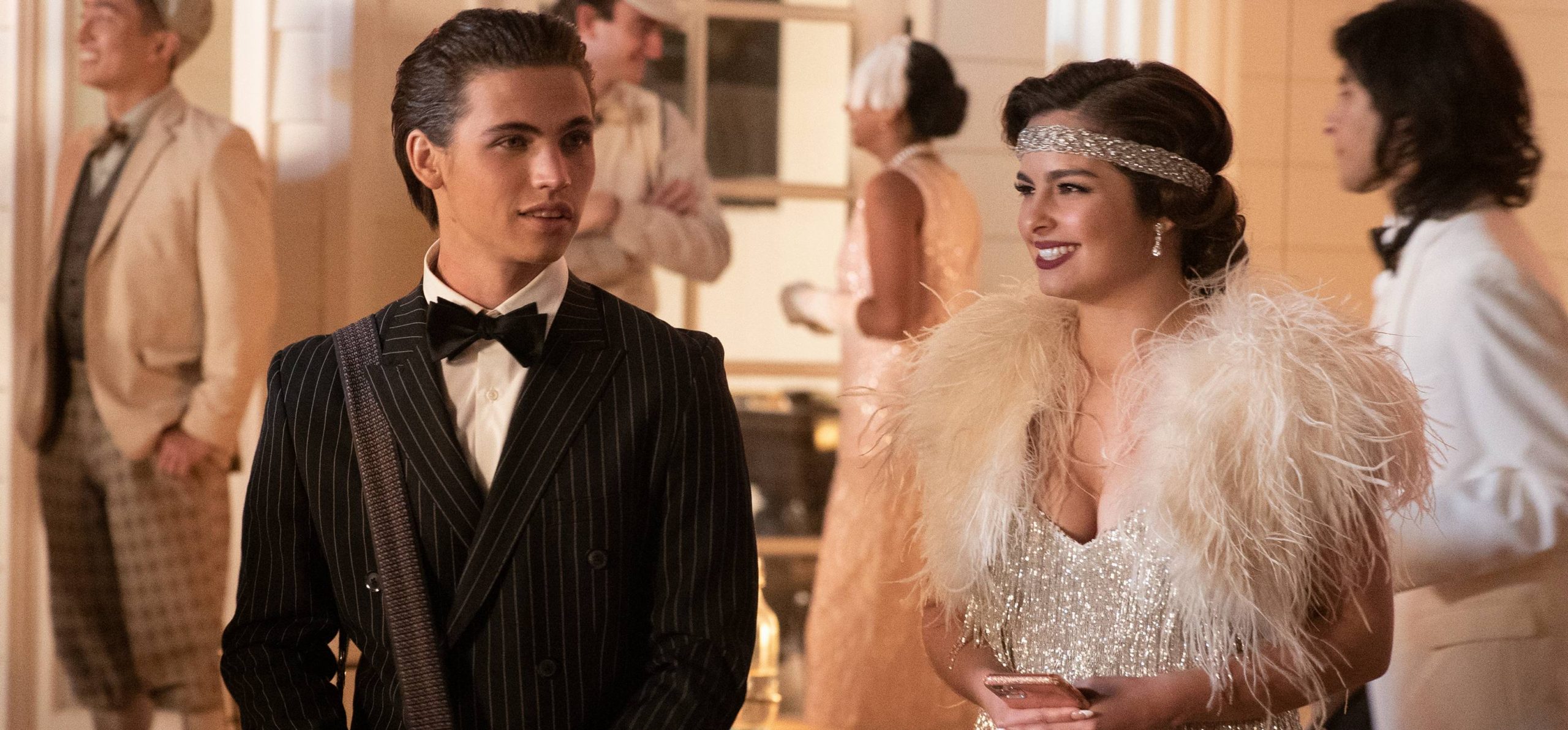Table of Contents Show
Nineties nostalgia has never been in higher demand than in the last decade, and idealistically, it gives filmmakers a chance to rewrite the clichés of a past generation. However, more often, these remakes of popular classics become complicit in maintaining the outdated stereotypes of their former counterparts. It’s a trend that is painfully apparent in Mark Waters’ Netflix remake, He’s All That. While She’s All That (1999) is not a perfect film by any means, and certainly not in the regard that it relies heavily on gender stereotypes, its flaws are reflected in the canon of teen rom-coms of the decade that showed an overall lack of representation for women and minorities. Regardless of its flaws, Robert Iscove’s She’s All That is a product of its generation, whereas Waters’ He’s All That allows the pattern of gendered behavior to continue under the veil of attempting a more “progressive” gender swap.
He’s All That: The Misrepresentation Of Modern Teenagers
With the potential to break free from the enforced narratives of gender, the 2021 remake of She’s All That instead reinvents them from the perception of teenagers by adults. The disconnect between the director and the audience of the film (mainly gen z) is shown in the way teens are depicted in their everyday activities. As the teenage rom-com is known to be particularly inaccurate in the way it represents adolescents, this doesn’t come as a surprise. Instead it is more underwhelming to see that old tropes are still being perpetuated in film. It’s always interesting to notice how adults’ perceptions of teenagers change over time but are still very grounded in traditional gender “scripts.”
Gender And Social Media
In both the original and the remake, there is a significant emphasis on vanity and physical appearance. In He’s All That, one of the main tools used to show how the characters prioritize personal appearance is through social media and the concept of having an online persona. The main female character, Padgett Sawyer (Addison Rae), is a beauty and lifestyle influencer whose very essence is caring an appropriate amount about her physical aspect and how she portrays herself online. From the very first scene of the film, when she wakes up, she is actively fixing herself to seem effortlessly polished, shown doing her morning beauty routine before crawling back into bed to greet her followers. Immediately established is the notion that women must adhere to beauty standards in order to maintain popularity.

Following the formula of She’s All That, the popular main character goes through a breakup that inspires them to take on a “project”, AKA giving an unpopular peer of the opposite gender a makeover. In this case, Padgett finds her ex-boyfriend cheating on her while on social media live and experiences a drastic smear of her reputation, while her ex remains socially relevant despite being filmed cheating on his girlfriend. This incident becomes so detrimental to her career that she loses connections with brand sponsorships while, again, her ex-boyfriend, Jordan Van Draanen (Peyton Meyer), is able to thrive as a popular male internet celebrity without facing any consequences.
The precedent set at the beginning of He’s All That serves as a guide for how women and men navigate social media throughout the film. It’s a standard that says women must follow strict guidelines for how to present themselves online, whereas men can essentially act without any regard for accountability. While this could be considered a commentary on how men and women are subjected to different standards of media usage, we have to remember that the film’s target audience lies within the demographic of adolescent girls. These are some who are relentlessly reminded of these standards by experiencing them directly. Because of this, trying to relay a “woke” social commentary simply becomes dull and overdone in the eyes of those who are already so aware of these issues.
Gendered Perceptions Of Vanity And Empowerment
Because of Padgett’s career as an influencer, she is constantly aiming to create a persona for herself that fits the standard for women — paralleled with an overused narrative of “being yourself” on social media — the film uses her physical appearance to convey when she is being authentic or putting on a facade for her fanbase. On multiple occasions, for example, she will take her makeup off in front of the camera in an attempt to seem more relatable or empowered. However, this feels like a very tired attempt to make her character feel like she is breaking free from gender norms. What director Waters conveys is a narrow spectrum of what is expected of women to feel liberated.

They must alter their appearance to appeal to popular conventions of beauty, but on the other end, have to be seen as “natural” and untouched in order to experience liberation. The truth is that empowerment comes from presenting yourself in any way that makes you feel at your best, whether with makeup or without it. Unfortunately, this spectrum of vanity seems to only apply to the women of the film. The lead male character, Cameron Kweller (Tanner Buchanan), hardly feels the pressure of beauty standards for men and doesn’t seem to mind his appearance before and after his makeover. In many ways, it would have been beneficial for the film to discuss the way men are also victims of societal pressure and standards of attractiveness. The audience is left with the same 90s perspective of gender expectations that She’s All That left us with.
She’s All That: The Blueprint For Gender Stereotypes
Robert Iscove’s 1999 teen classic did a lot to shape a generation, but it also created a trend in what Cosmopolitan’s Melissa Blake calls the “After-Makeover trope.” This phenomenon has influenced a collection of teen films, but it’s significant to understand the root of the trope to understand better how He’s All That makes no real effort to combat the gender binary enforced by it.
The Effect Of Reality Television On Teen Self-Image
Similar to how its modern counterpart uses social media to display the importance of self-perception, the reality TV boom of the 90s is ever-present in Iscove’s original film. Specifically, MTV’s The Real World plays a large part in the type of attention to physical appearance over one’s personality. Brock Hudson (Matthew Lillard) plays an essential role in showing how the culture of the ’90s shifted to incorporate perception of oneself through televised media. His character is used to make an example of the spectrum of vanity that is acceptable or, in his case, obnoxious. From here, different characters begin to fall into parts of the spectrum, which do happen to be disproportionate depending on gender.
For male characters, Brock falls at one extreme end of the spectrum in which he is self-absorbed, but sometimes still tolerated (until his infamous dance number to Rick James’s “Give It To Me Baby”). Zack Siler (Freddie Prinze Jr.), the lead male character — Padgett Sawyer’s gender-swapped equivalent — lies on a different end of the spectrum. Zack is the quintessential popular high school football player. He is effortlessly cool and attractive — not too vain, but confident enough to never have to worry about changing his appearance for others. There is the same dichotomy between vanity and modesty for the female characters with Laney Boggs (Rachel Leigh Cook) and Taylor Vaughan (Jodi Lyn O’Keefe).

Laney is the female lead and the subject of a bet between Zack and his friends. As the “scary and inaccessible” art student, Laney naturally clashes with the prioritization of self-image that the popular students hold at her high school (( Iscove, Robert, Dir. She’s All That. Miramax. 1999. )). Contrarily, Taylor is Zack’s ex-girlfriend obsessed with her family’s legacy as prom royalty and her newfound C-list reality star boyfriend, Brock.”
The film is not covert about their opposition to each other as they become rivals in the election for prom queen. Interestingly, there is still some uncertainty about what is deemed acceptable for women in terms of their confidence. Once Laney is nominated, she becomes somewhat celebrated for her relatability to the average teenager and even makes her class rethink whether Taylor’s attractiveness absolves her from being an archetypically rude hot girl. It seems that in the same vein that with He’s All That, social media is linked with superficiality; the most arrogant characters in She’s All That have closer proximity to reality TV.
Implications Of The Makeover Trope
Of course one of the most infamously discussed qualities of She’s All That is the film’s message that in order for someone to be perceived as desirable, they must undergo an aesthetic transformation. One of the many issues with this starts with who Laney Boggs actually is before her iconic makeover. She’s chosen by Zack’s friend Dean Sampson (Paul Walker) to be the project Zack must take on and make prom queen. But of course, this being a 90s teen rom-com, she is a conventionally attractive thin white girl who happens to have an interest in art and a distaste for teenage superficiality. Parodies of the film, such as Not Another Teen Movie (2001) actually make a great commentary about the asinine nature of calling an attractive girl with paint spilled on her overalls “the ugly girl” and then proceeding with a makeover that consists of taking her glasses off and giving her a haircut.
Laney effectively experiences two ends of the polarizing expectation for young women to appear. Prior to her makeover, she feels comfortably unnoticed by the students at Cali High School but is seen as an unapproachable misfit (for unrealistic reasons). However, post-glasses-removal, she begins to collect a following of people and becomes an object of sexual desire by Zack’s own friend Dean. The way Dean shifts his perception of her from a clumsy art student to a girl he finds sexually attractive is a direct example of the trope that women only have value if they are considered sexually appealing to men. It’s additionally amusing that he pursues her after belittling her at the beginning of the film and seems to have no self-awareness of his own pomposity.

However, there is a real issue that comes out of his desire to conquer Laney: he almost sexually assaults her after they attend the prom together. Thankfully for Laney, this is resolved rather abruptly, but it’s also interesting how a potentially traumatic event is brushed over so quickly. Regardless of the film’s inability to address such a relevant issue surrounding the dangers women face for simply being attractive, it still amplifies the dichotomy that they must carefully navigate. Laney is subject to being a social pariah when she presents herself normally, but consequentially she also sees the negative consequences of being sexually valued by men.
When A Remake Preserves Too Much From The Original
When comparing the two films, it’s much easier to point out their similarities than notice any discrepancies. This is due to the fact that much of what He’s All That accomplishes is recreating most of the conventions of gender in She’s All That.

While it would have been refreshing to see men and women (even people outside the gender binary!) act in a way that is different from the tropes that shape and reflect teens, the only major difference between them is the gender swap itself. Even so, the roles of femininity and masculinity remain mostly the same, with some progressive additions to the cast.
The Cool Kids: Zack Stiles And Padgett Sawyer
One of the most prominent ways an audience can see how He’s All That recreates gender archetypes is by looking at the two popular leads from the original and the remake. Where breaking away from tradition would have left Padgett more similar to Zack, again it feels like the gender-swap is the only change made to seem modern. However, Zack and Padgett are distinguishable by the gender scripts they each closely follow. In Zack’s case, he is the paradigm of male popularity, but he hardly worries about how others perceive him. Padgett, as aforementioned, is always striving for perfection and really struggles with keeping up with her social media presence. It affects her more than it ever affects her love interest Cameron, who is indifferent to being accepted by social standards.

In another aspect, the way the two handle their breakups is even significantly influenced by their gender. It takes Zack less than a day to regain his confidence after his breakup with Taylor, but Padgett sees major damage to her reputation and her college plans as a result of being “humiliated” online. This is one of the many reasons the adaptation feels stale in its content. There was an opportunity to display femininity in a truly empowering and confident wayIdeally, Padgett’s character could have taken on the personality of Zack and would have added a new layer to the popular girl trope. Had she been as carefree but confident as Zack is, the film could have been more gratifying to those looking forward to a change in the way women are on screen.
The Bets: Laney Boggs And Cameron Kweller
On the one hand, Cameron’s character could have rewritten traditional ideas of male standards for attractiveness. But, on the other hand, Laney experiences different treatment before and after she becomes conventionally attractive. Once again, the gender swap doesn’t change the way the female and male characters interact with their roles in society. In some ways, the female lead getting a makeover actually introduces some complexity about how people value women who are pretty, but there is seldom any nuance in Cameron other than he becomes more popular in the remake. In both films, the pressure is always on the women to seem approachable or desirable. At the same time, male characters can live freely without the constant demand to look or act any particular way.

Had he had been insecure or concerned with his ability to fit in with beauty standards, there could have been a compelling story about the way sexism affects people of any gender. Yet, his character stays stagnant and acts almost as a tool to portray how female empowerment must come from a sense of being “natural” or without decorating oneself. While both Cameron and Laney undergo some transformation, there is even a moment in the remake where he wipes off Padgett’s makeup to upkeep the film’s loose message about being authentic on social media. Even in a film promoted to be a less controversial take on a classic, he is still trying to alter his love interest’s appearance to appeal to his own beliefs.
Letting Go Of Outdated Film Tropes
Both films in the “They’re All That” universe could have thrived if they had broken away from promoting dangerous narratives about gender roles. In She’s All That‘s case, although a product of its decade, it is still difficult to pardon it for the unrealistic expectations it created. However, an argument can be made for its Netflix adaptation being significantly more underwhelming because this was a film that seemed like it would deliver new interpretations of femininity and masculinity. This isn’t to say that romantic teen comedies and dramas do not have the ability to be realistic and challenge tradition.

Plenty of films have been released within the last decade and even in the ’90s that have subverted constructed ideas of gender, race, and class. Films like Booksmart (2019) and Just Another Girl On The I.R.T. (1992) have been able to transcend conventional narratives about adolescence and are also able to provide a more diverse perspective. Mark Waters’ He’s All That was an anticipated remake of a beloved classic with major flaws. Unfortunately, its attempt to do something different actually reinforces the issues many have critiqued its predecessor for. Moving forward, viewers and fans of the teen genre need to notice how even some of our favorite films can promote the wrong kind of innovation.
